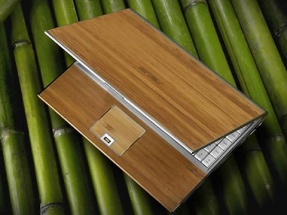Dear All:
I mentioned in an earlier message about the Pilipino pigs. You’ve heard
the story of the 3 little pigs: One built his house of straw or
grass. The second built his house of twigs and sticks. The third
built his house of bricks. Here in the Philippines everybody builds their
house out whatever they can afford or find: grass, straw, sticks, bamboo
poles or iron rebar and cinderblock bricks. Those “poles” prove to be as
versatile and strong as all of them. I think you ought to read Sister
Taylor’s attached interesting article.
See
you Soon, GT & DT
BAMBOO
We can’t leave the Philippines
without mentioning the great value bamboo which has across a myriad of cultures
and which spans thousands of years.
Bamboo’s uses have evolved over time.
Even in the 21st century, this “grass”—considered a symbol of
fertility in Chinese culture and a symbol of friendship in India—has been
utilized in a multitude of ways, some of which seem eccentric, especially by
North American standards.
Bamboo
is the fastest growing plant in the world and the longest grass which varies in
length from 30 centimeters to as high as 40 meter or 100 feet. Bamboo grows so fast that you can actually
watch it grow! Bamboo is a plant with extraordinary
economic potential. In a lifespan of 35
years, a bamboo plant can produce 15 kilometers of usable pole.
Bamboo
is the savior of the Philippine environment which helps in preserving the
forests, contributes to the conservation of biodiversity rehabilitates degraded
land. Bamboo aids in conserving top-soil,
in water management, and in providing food, security and human economic
sustenance.
Bamboo
is the most versatile and one of the most beautiful plants on earth with 1,250
species. There are 12 bamboo genera consisting of 49 species in the
Philippines. There are only eight species used extensively: kawayan tinik, kawayan kiling, bayog, botong,
giant bamboo, bolo, anos and buho.
There
are over 1,500 documented traditional uses of bamboo. Let me list a few:
1. Food: It is a
source of food due to its edible shoots. As a food, it is a near-relative of rice, corn, wheat,
oats and barley. Bamboo shoots contain
large amounts of protein, vitamins and minerals.
2. Medicine: The
vinegar produced from distillation can be used in the treatment of allergies,
as a sore-throat antiseptic, a skin and hair conditioner and as a cleanser.
3. Building Construction: Bamboo is ideal for construction purposes because
of its tensile strength which is superior to mild steel; it has a
weight-to-strength ratio better than graphite. Bamboo is the strongest plant on earth—and it
is durable. The bamboo plants located near ground zero at Hiroshima, Japan in
1945, survived the atomic blast and grew new shoots within days. It is used as, 1) house components – floor,
stair, post, wall, divider and flat bamboo tile; 2) fencing and foot bridges;
3) scaffolding--incredible tensile strength and is comparable to steel; 4) concrete
reinforcement; 5) plywood--cement-bonded board with bamboo.
4. Furniture: tables,
chairs, cabinet, bed, hamper, etc.
5. Handicraft: baskets,
trays, torches, lamp-stands, or shades, vases, trays, utility boxes.
6. Toys and Musical instruments: organ,
flute, marimba, xylophone, angklung, “the sliver of bamboo increases the sound
fidelity of audio-systems
7. Handles for farm tools, i.e., sickle, scythe; Shipping
containers
8. Fishing Equipment- difficult to break yet easy to bend
9. Art & Writing Materials Paper and “Papel de Japon”
10. Thinned strips for tying; Hedges and wind breaks
11. Jewelry – necklace, brooch, bangles, fashion,
accessories
12. Cooking utensils; Hand-loom for weaving
13. Charcoal : The bamboo charcoal produces the hottest of
fires required to melt gold. The bamboo charcoal has industrial and specialty
uses. It can be used to clean the air, purify water, and absorbs odors
14. Alternative Energy waterwheels for hydropower and blades for wind
turbines
15.
Health and
Beauty Products, anti-bacterial and anti-fungal
properties
16.
Clothing, bedding, underwear, baby diapers, blankets, bags, hats, and
much, much more.
17.
Bicycles,
Motorcycle & Bicycle Helmets
18.
Cars, Kyoto bamboo electric car; Computer Hardware
19.
Folk
dancing props; Weaponry
20.
Caskets biodegradable, making it one of the greenest ways to spend
the afterlife.










